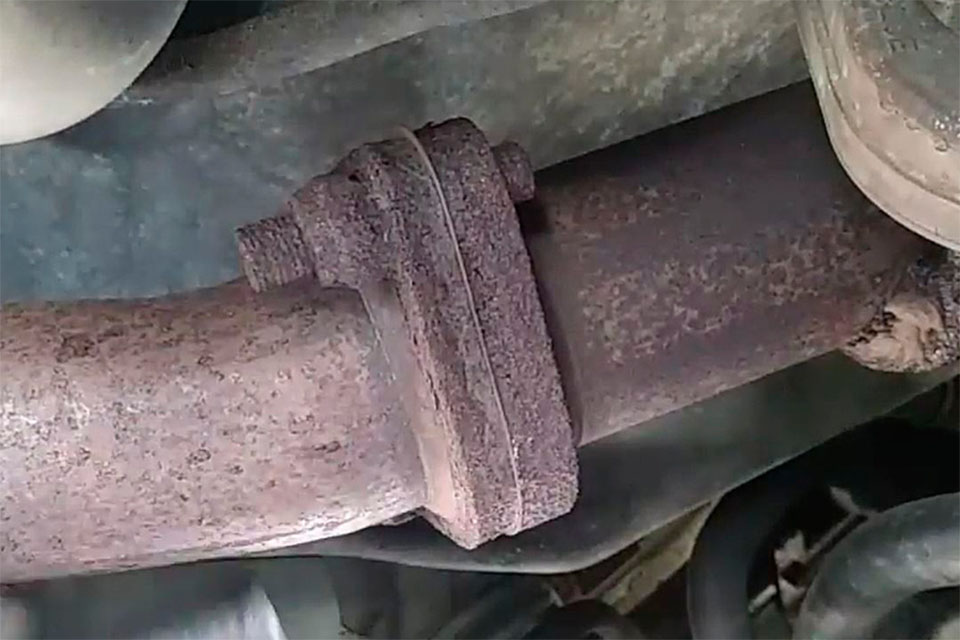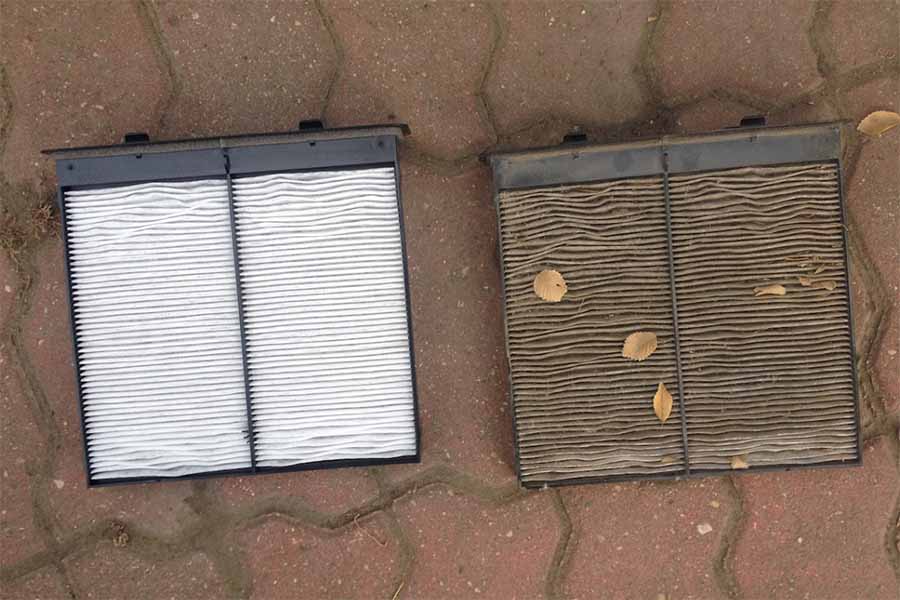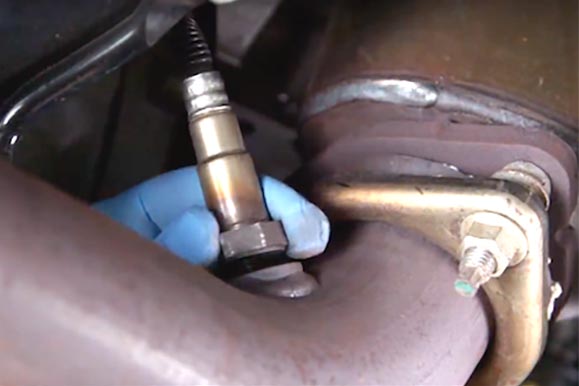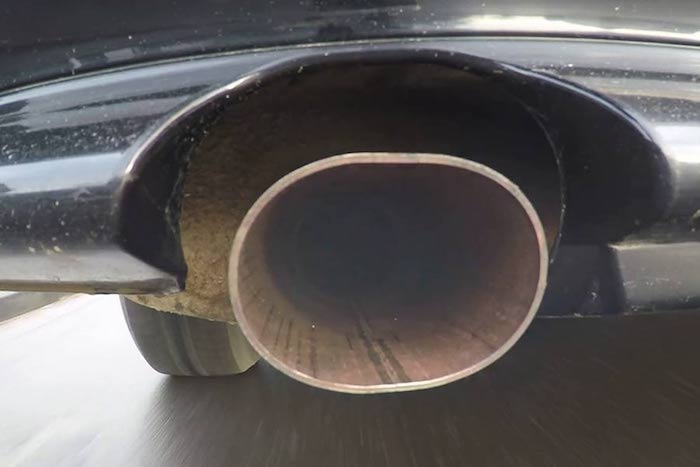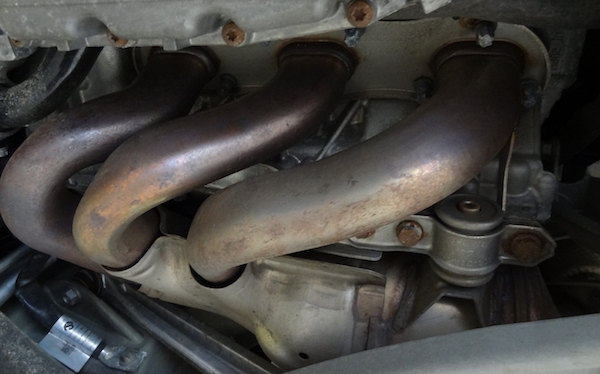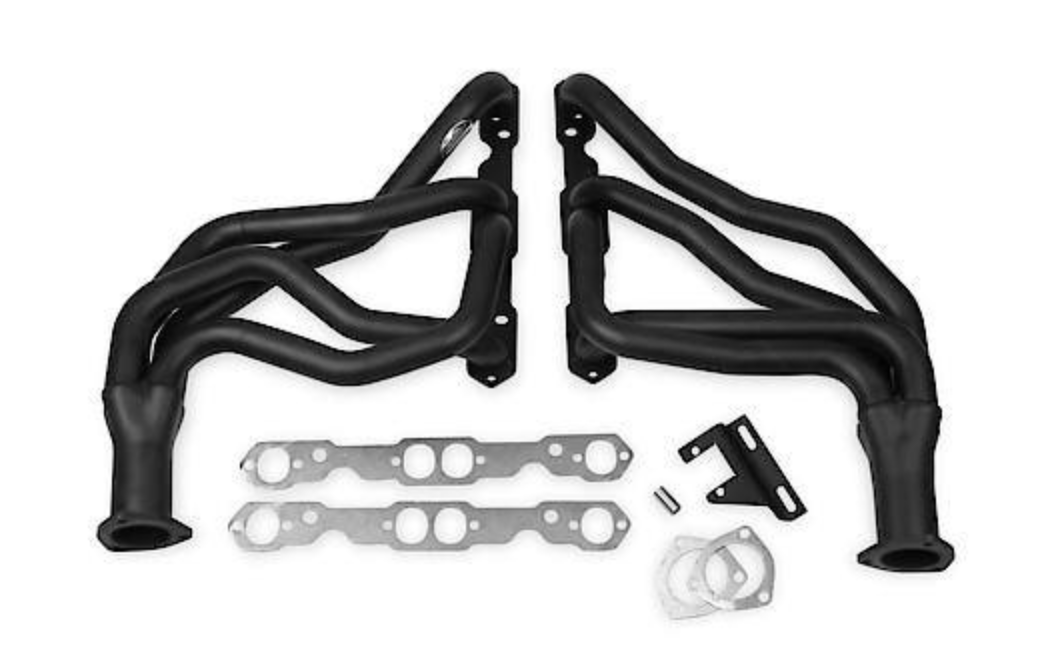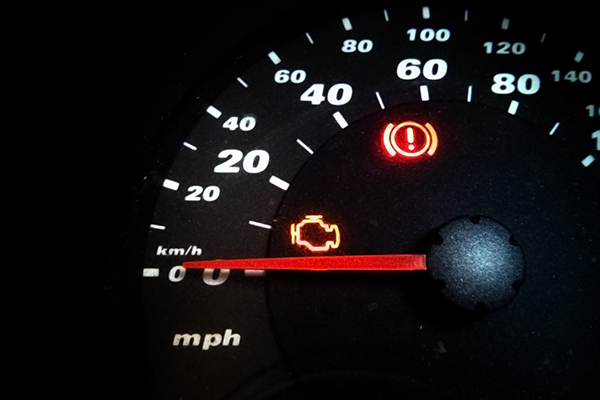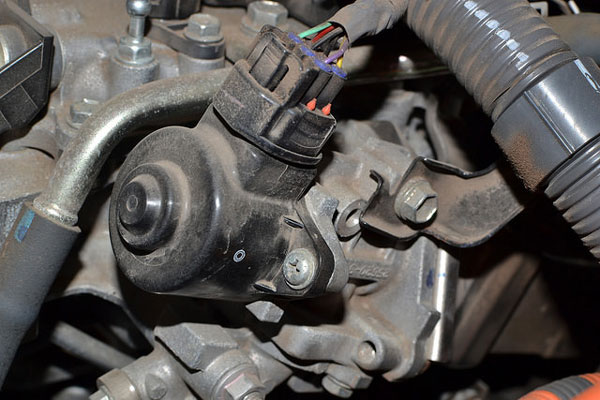 Source | Mike Aguilar
Source | Mike Aguilar
Your car's catalytic converter is a mandatory component of the exhaust and emissions system. Precious metals in the catalytic converter - including platinum and palladium - react chemically with exhaust gases to reduce emissions. The harmful compounds in the exhaust stream are nitrogen oxides (NOx), hydrocarbon (HC), and carbon monoxide (CO). In a properly operating catalytic converter, those compounds exit the muffler as harmless water (H2O) and carbon dioxide (CO2). Advance Auto Parts has compiled some information on how to determine if yours is faulty and how to replace them at home instead of paying hundreds (if not thousands) of dollars at a shop.
This is a project that needs some know-how
- Bad catalytic converters can emit a strong sulfur odor that smells like rotten eggs.
- Another common complaint that indicates a failed catalytic converter is a car that won't go much faster than 40 mph or feels like you're trying to tow a house uphill.
- Rattling from the exhaust system, specifically the converter.
- The check engine light is on. Stop by your local Advance Auto Parts store and we'll be happy to plug in and check the codes for free to let you know where the problem is.
- Be sure to ask Advance Auto Parts about the specialty exhaust tools available at no cost to you through the Loaner Tools Program.
- Inspect the whole exhaust system prior to beginning this project. Check pipes and hangers for rust, breaks, holes in pipes, and cracks in parts and joints. If you see heavy rust, squeeze the part/pipe to check its integrity. If you can squeeze it easily, it should also be replaced.
- Exhaust system components are more susceptible to rust because they are more exposed to the elements, and can be scoured by dust and grit while driving. They also go through repeated heat cycles, which means the nuts and bolts will often be rusted so bad they can't be removed by normal means. The liberal use of penetrating oils might help, but you may have to either twist these bolts beyond their breaking points or use a torch to cut or loosen them. You may also need a big hammer and a sharp chisel to break flange connections loose in cases of extreme rust.
- Measure the diameter of the exhaust pipes on your car before and after the catalytic converter before buying the new unit to make sure you get the right one. This is especially important on older cars as the converter may have already been replaced once.
- Ask your Advance Auto Parts sales associate for help finding heat-resistant exhaust pipe tape if your new catalytic converter has slip joints. This tape ensures you get a leak-free installation.
- Always park your car on a smooth and level surface if you're going to be working on it. Gravity is unforgiving.
- Always wear safety glasses when working under your car. You've only got two eyeballs and they need to last your whole life.
- You will need a way to support the exhaust system components that aren't removed during this project. An extra set of jack stands comes in handy for this, but you can use a metal hanger if you don't own three sets of stands.
- If you don't own a creeper, you can use a large piece of cardboard or carpet scrap to isolate you from the cold, dirty ground.
-
Raise the vehicle, preferably at both the front and rear, high enough for you to slide underneath and work comfortably. Liberally spray all the nuts and bolts on the pipes and parts that need to come out. Give the penetrating oil some time to work before you start wrenching on anything.

Source | Mike Aguilar
-
Disconnect and remove the O2 sensors from the catalytic converter. Most cars built after 1996 will have one sensor before the converter and another after it. You can leave the sensors connected, but you run the risk of damaging the wires during removal and re-installation if you do. Once the sensors are out, reconnect them and tuck them out of the way.
-
Remove the bad catalytic converter. Depending on whether it's OEM or not and/or how old the car is, it may be welded in, it may be welded on one side and flanged on the other, or it may be flanged on both ends.
Welded converters will have to be cut out. Use a grinder with a cut-off wheel, hacksaw/reciprocating saw, pipe cutter, or a torch for this. Make sure you wear the appropriate personal protective gear while doing so.
Advance Auto Parts also has an exhaust pipe/tube cutter tool in our loaner tool program if you don't have any of the tools mentioned above.
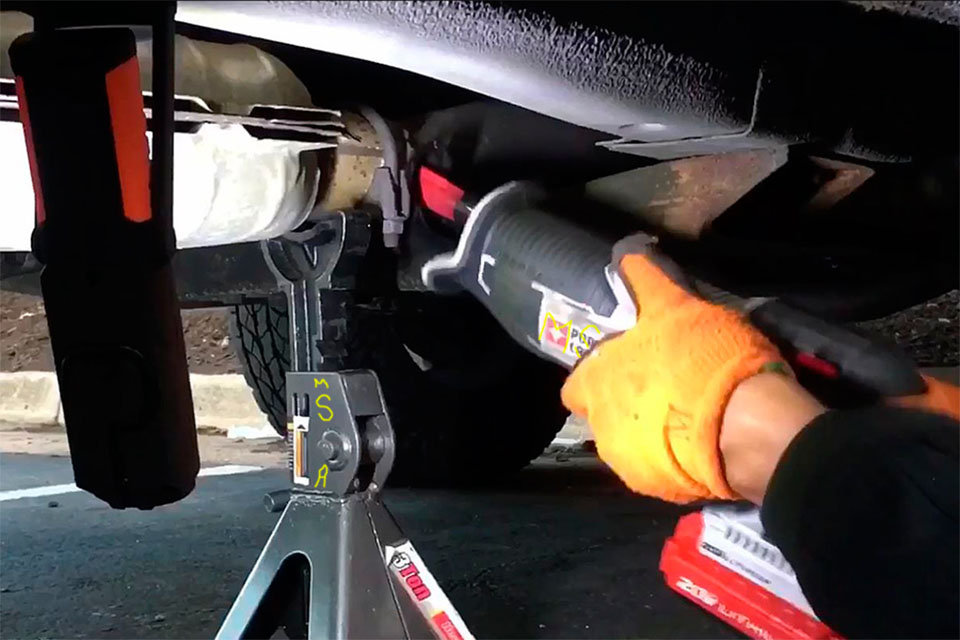
Source | Mike Aguilar
-
Using a sanding block or gasket cleaner on a drill, thoroughly clean the flanges on the manifold/muffler/exhaust pipe if so equipped. If you've cut the converter out, deburr the pipe ends with sandpaper or a file.
Using a Brillo or SOS pad on the outer circumference of pipes that will be sliding into others is a neat little trick to help them seal when you're done. The small irregularities caused by rust are often enough to create exhaust leaks.
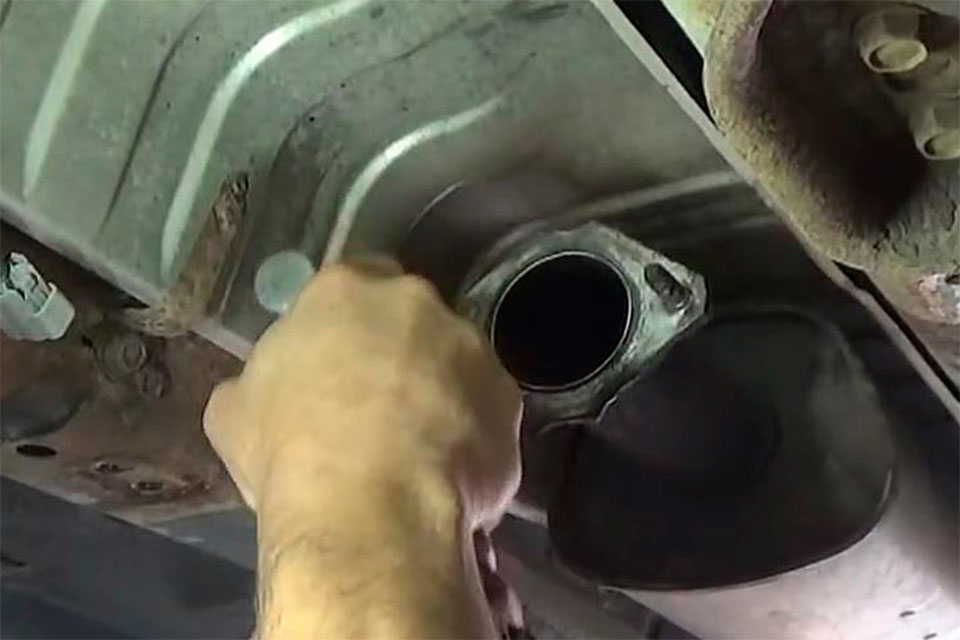
Source | Mike Aguilar
-
Remove the rest of the exhaust and hangers that need replacement.
-
Compare the pipe sizes of the new converter and the existing pipe. You will need to swage (expand) or shrink one of them if they don't slide together (using the pipe expander tool in the exhaust tool kit in the loaner program mentioned above). This may also be necessary if the pipes differ in size by more than an eighth of an inch or so to make sure they seal together when you're finished. This is done by inserting the expander of the proper size into the piping needing to be expanded and turning the bolt on the end of the tool clockwise until the pipe is big enough to slide over the other pipe with resistance.
-
Install any new exhaust pipes prior to installing the new catalytic converter. Don't forget new gaskets.
Install the new hangers. Use anti-seize on all the bolts and/or studs to make it easier to service the exhaust if necessary in the future.
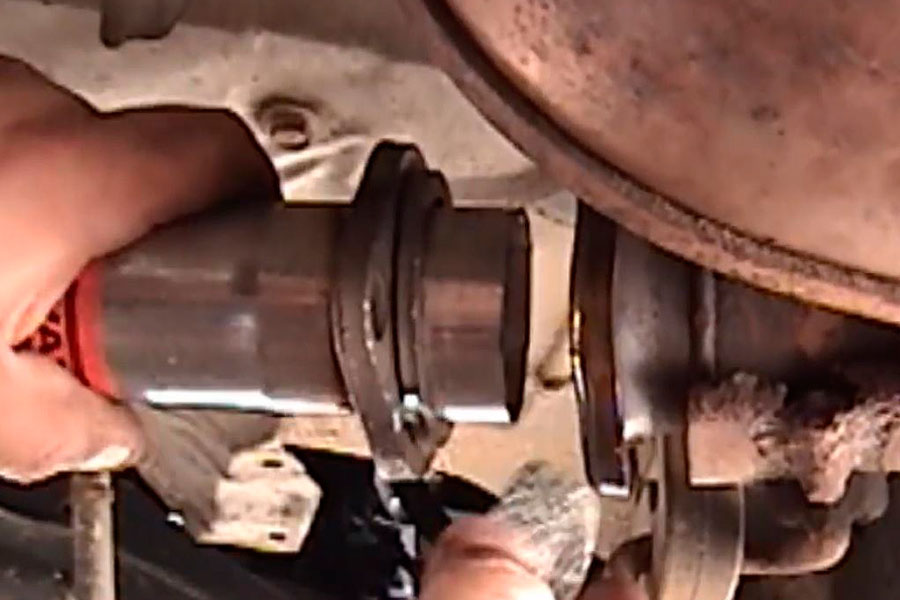
Source | Mike Aguilar
-
Making sure you get flow direction correct and install new donut gaskets, install the new converter. Remember, they are directional and installing the new one backwards is guaranteed to quickly destroy it. Reinstall and reconnect the O2 sensors.
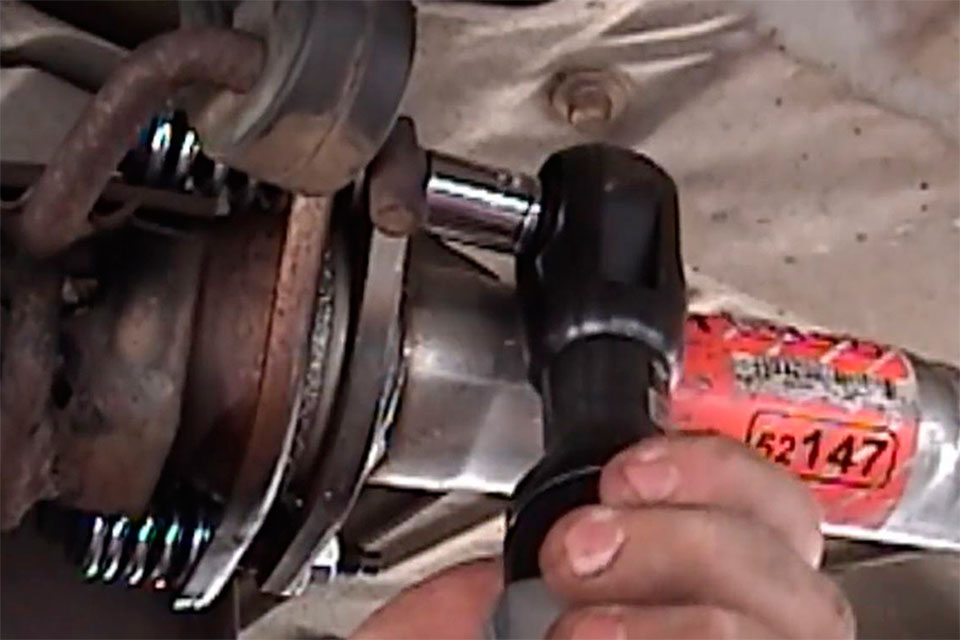
Source | Mike Aguilar
-
Start the engine and check for leaks. Admire your work.
Here are a few of the most common symptoms of a bad catalytic converter:
Like any component in your vehicle, the catalytic converter can wear out naturally with enough time and mileage. However, it's important to know that there are some conditions that can lead to premature failure. When the internal honeycomb structure gets contaminated, it can stop functioning. A common example of this situation is when there's an engine problem like weak ignition coils or slightly off timing results in your fuel not being fully used in the combustion cycle. That unburned fuel will get passed through the exhaust and go to the cat. This causes overheating, which in turn melts the honeycomb substrate and clogs the catalytic converter.
Before replacing your catalytic converter, it's important to know another problem has led to the failure of the cat—otherwise, you'll be doing the same repair all over again soon. For more help, read our article on diagnosing a broken catalytic converter.
Support the sections of the exhaust that aren't being replaced. They aren't terribly heavy, but they do hurt when you bang your head on them.
Have you ever replaced a catalytic converter? How did it go? Did you have any problems or issues completing the project? Let us know in the comments.
